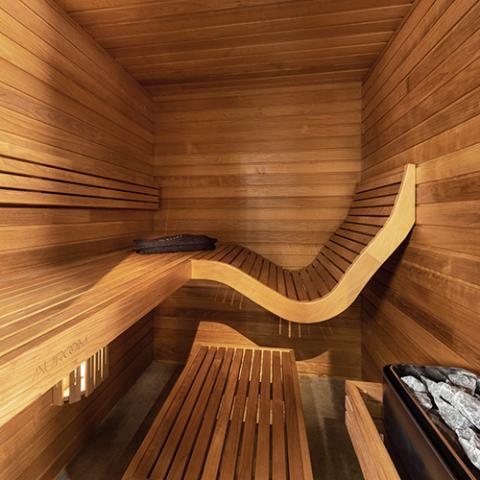All about Traditional Sauna
All about Traditional Sauna
Blog Article
Traditional Sauna - An Overview
Table of ContentsFascination About Traditional SaunaSome Ideas on Traditional Sauna You Need To Know6 Simple Techniques For Traditional SaunaFascination About Traditional Sauna
A lot of the weight lost in a sauna is water loss and is re-gained upon rehydrating. However, without an uncertainty sauna can be a vital part of a healthy weight reduction program. To take a look at the distinctions in between traditional and IR saunas, I will certainly divide these into verifiable, academic, and made distinctions.Thus, the best point in the saunawhich goes to the ceiling straight over the sauna heateris generally in between 185 and 190 F. Traditional Sauna. Claims that a standard sauna exceeds 200 F is just not true and not suitable for electrical saunas sold in the US. The temperature level for a far-infrared sauna is typically established in between 120 and 140 F; nonetheless, unlike the conventional sauna, the goal in and IR area is not to achieve a high temperature
Due to this, the temperature level distinction is virtually unimportant, since excessive sweating leads to both sauna types, however the technique of heating up the body is different. In an IR sauna the bather will really feel hot and will certainly sweat profusely, yet at much lower temperature levels. Therefore, if the objective is to spend longer amount of times in the sauna, the IR sauna is a great selection.

The Main Principles Of Traditional Sauna
When the high temperature is accomplished, the components cycle on and off to maintain the heat. Many conventional sauna individuals appreciate putting water over the rocks to produce vapor to elevate sauna moisture degrees. The advantages of putting water over the rocks consist of: making the room extra comfortable, dampening the nasal passages, and allowing the usage of aromatherapy by blending important oils with the water.
In a far-infrared sauna, the heat waves permeate the body to efficiently warm the body and raise the body core temperature. To attain this increased temperature, Far-infrared emitters produce infrared power which is close to the same wavelength as that which the body naturally emitsoften referred to as the "Important Array" of 7 to 14 microns), so the power is well received by the body.
When the power goes into the body, it creates the body temperature level to raise and eventually results in perspiration. In an infrared sauna it's vital for the emitters/heaters to continue to be on almost constantly. Considering that there is no mass of rocks to retain warm, the sauna will certainly cool if the emitters turned off.
As discussed over, the Look At This sauna bather in an infrared room wants to place himself before running emitters to obtain maximum take advantage of the warm. The home heating time for both spaces can be really various, depending on just how the rooms are utilized. For a typical sauna, a bather must enable 30-40 mins for the room to accomplish a preferred temperature level and to effectively pre-heat the rocks.
The Only Guide for Traditional Sauna
A well created sauna will normally achieve a temperature of 150-160 F in concerning 30-40 mins (Traditional Sauna). For hotter temperature levels, the space might require to warm for a longer duration. Once the area accomplishes established temperature, the heating unit will cycle on and off, generally operating concerning 50% of the moment. The protected walls and the heated rocks will certainly maintain the space other warm and at steady temperature levels.
To some, 15 minutes was "thrown away" while the infrared power heated up the wood panels rather than warming a body, while others locate a pre-heated area to be more comfortable and believe a raised beginning temperature is required to start sweating. The size of recommended usage for each room is around the same (10-15 mins per session); nonetheless, due to the reduced air temperatures and the ability to really feel the effects of infrared heat much faster than a standard sauna, it is not unusual for an individual to invest an overall of 20-30 minutes in an infrared sauna.
Traditional saunas have a tendency to be bigger (hence use more electrical power) than infrared saunas, although standard saunas are certainly readily available in one and 2 individual sizes also. For a two-person traditional sauna, 5x6 or 5x7 size is most popular. The top bench can comfortably seat two or 3 people and is also long sufficient to exist down throughout the sauna session.


The typical price per kWH of electrical power in the U.S. is around $0.11, so a 4.5 kW heater will cost approximately $.50 to run for one hour, if the heating system runs constantly for one hour. Normally a sauna heater will compete 75% of the initial hour and 50% of subsequent hours on since the components cycle once the set temperature is attained.
All About Traditional Sauna
A two person far-infrared space is generally physically smaller than a traditional sauna, commonly concerning 4' x 4' or smaller sized. The IR furnace is usually 1.5-1.7 kW web making use of a 120 volt 15 amp plug-in solution. Given that the room can be used quicker than a sauna space, we will assume the room is made use of for to of an hour consisting of warm up time.
There is a rarely gone over difference in the social experience in between the 2 spaces. While our culture has actually shed some of the social benefit of the conventional sauna experience, it can be very socially satisfying. From family members time in the sauna, to heart-felt discussions with loved ones, to sauna partiesthe conventional sauna experience can result in intimate socializing.
Most greater end infrared rooms consist of tinted light therapy, sound systems and full-glass fronts.
Report this page